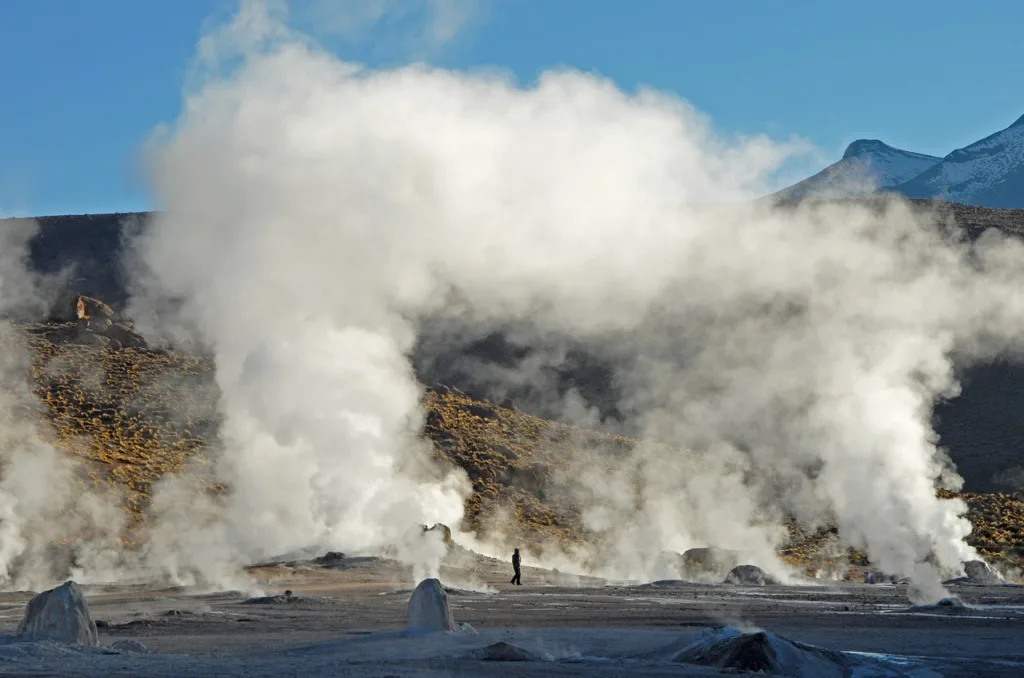Vaporizing is a physical change that occurs when a substance changes its state from a liquid or solid into a gas. This process is also known as evaporation or boiling, depending on the temperature at which it occurs.
During vaporization, the molecules of a substance gain enough energy to break the intermolecular forces that hold them together in a liquid or solid state. As a result, they become more energetic and move more rapidly, eventually escaping into the surrounding atmosphere as a gas.
It is important to note that vaporization is a physical change, not a chemical change. This means that the molecules of the substance do not undergo any chemical reactions or bond-breaking/bond-making processes during vaporization. Instead, the arrangement of the molecules and the intermolecular forces beteen them change, leading to a different physical state.
For example, consider water. When water is heated to its boiling point (100 degrees Celsius), it begins to vaporize and turn into steam. At this point, the chemical composition of the water remains the same – it is still H2O, but it is now in a gaseous state instead of a liquid state.
It is important to distinguish between physical and chemical changes, as they have different implications for the characteristics and properties of a substance. Physical changes, like vaporization, are usually reversible and do not alter the substance’s chemical identity. Chemical changes, on the other hand, involve the breaking and/or formation of chemical bonds, resulting in a new substance with different properties.
Vaporization is a physical change that does not involve any chemical reactions or bond-breaking/bond-making processes. It is a reversible process that changes the physical state of a substance, without altering its chemical identity.
Is Water Being Vaporized A Chemical Change?
Water being vaporized is not a chemical change. When water is vaporized, it undergoes a physical change in which its state changes from a liquid (H2O(l)) to a gas (H2O(g)). This change in state does not involve any chemical reaction or the breaking or making of any chemical bonds. The water molecules remain the same, only their arrangement changes. Therefore, evaporation is considered a physical change and not a chemical change.

Is Vapor A Physical Change?
Vaporization is a physical change. Vaporization is the process of converting a liquid into a gas or vapor state. In this process, the intermolecular bonds between the particles of the liquid are broken, and they gain enough kinetic energy to escape into the air as gas molecules. Since the chemical composition of the substance does not change during vaporization, it is considered a reversible physical change. Vaporization can occur throgh boiling, evaporation, or sublimation, depending on the conditions of temperature and pressure. Therefore, we can say that vaporization is a physical change that involves the conversion of a liquid into a gas or vapor state, and it is reversible.
What Type Of Change Is Vaporization?
Vaporization is a type of phase transition that involves the conversion of a substance from its liquid phase to its gaseous phase. This change occurs when the temperature of the substance reaches its boiling point, which is the temperature at which the vapor pressure of the liquid equals the pressure of the surrounding atmosphere. There are two types of vaporization, namely evaporation and boiling. Evaporation occurs at the surface of a liquid and is a slow process that involves the escape of molecules from the liquid into the surrounding air. Boiling, on the other hand, occurs throughout the entire liquid and is a rapid process that involves the formation of bubbles within the liquid. Both evaporation and boiling are examples of vaporization, which is an important process in many natural and industrial systems.
Conclusion
Vaporization is a physical change of state from a liquid to a gas and is a reversible process. It involves the conversion of a substance’s molecules from a highly-ordered liquid state to a less-ordered gaseous state. The two types of vaporization are evaporation and boiling, with evaporation occurring at the surface of a liquid and boiling occurring throghout the entire liquid. Vaporization does not involve any chemical reaction or breaking or making of chemical bonds, but rather a change in the physical state of the substance. Understanding the process of vaporization is important in various fields, including chemistry, physics, and engineering, and can have practical applications in industries such as food and beverage, pharmaceuticals, and energy.
